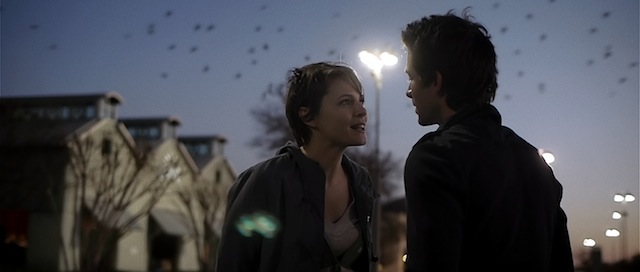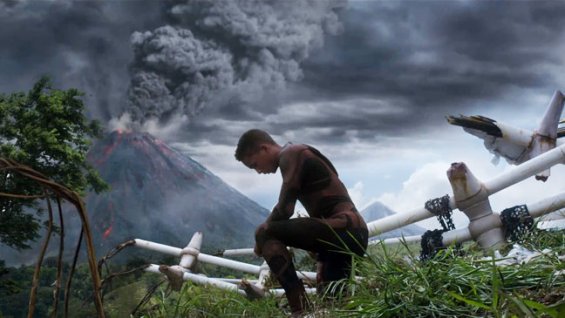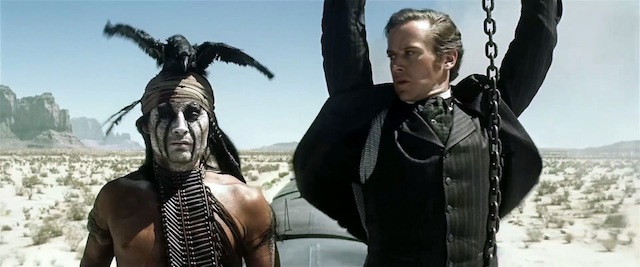It was a weird year for me and film viewing. I ended up spending most of my time in cinemas watching mediocre summer fare, and I had to scramble at the end to rent and watch the films I had wanted to see all along. Well, I finally saw everything on my list and now I can present my top five favorites. Here they are:
1. Blue Jasmine

More than any other Woody Allen film, Blue Jasmine is a study of emotional pain. I was devastated by Cate Blanchett’s portrayal of a broken socialite driven to madness by her own bad choices and the selfishness of the people around her. The film often plays like a dark comedy, but there’s nothing funny about this story. Blanchett’s Jasmine weds a crooked real estate investor and her life and the lives of her sister and brother-in-law–who invest in his schemes–are subsequently destroyed. Having turned an intentionally blind eye to her husband’s crooked dealings, Jasmine is plagued by the knowledge that she is somewhat to blame for her own downfall and the pain she has caused her sister and son. She turns to drug and alcohol abuse for solace and her grip on life begins to spiral out of control. Her sister tries to show her grace, but her unwillingly to fully forgive Jasmine and her bad choices in men, who show Jasmine no grace at all, drive an irreparable wedge between them. While some characters in this film make slightly better choices than others, no one is without guilt, and everyone contributes to the pain of everyone else. It’s one of Allen’s approaches to storytelling that I’ve always appreciated: his unflinching portrayal of a world where no one is blameless. The film ends on a very dark note, and I’ll never look at a crazed homeless person the same way again. It’s a film worth watching for that fact alone.
2. Inside Llewyn Davis

It’s remarkable how many kinds of films the Cohen brothers have made: gritty crime thrillers, madcap comedies, mannered period pieces, psychological dramas, and musical extravaganzas. They’ve tinkered with 1940s fast talking noir, cartoonish grunge and violent realism. It’s hard to imagine, watching Inside Llewyn Davis, a slow period piece character study, that these are the same guys who brought us The Big Lebowski, yet both films, though wildly different from each other in tone and execution, share the Cohens signature wit and candor, the unexpected events and great characters. Llewyn Davis is a folk musician working in the 1960s Greenwich Village scene who can’t seem to catch a break. The Cohen’s walk a thin line with this character, placing him somewhere between sympathetic protagonist and jerk loser, and though you’re constantly tempted to feel sorry for him, he continues to make the worst possible choices in every situation, facing the ironic consequences. Llewyn is his own worst enemy and you often don’t know weather to laugh or cry at his escapades. We follow his mournful wanderings for a few cold winter days and then the film just ends. In a cinematic culture where plot is king It’s refreshing to see a simple character study that’s also rich in complex characterization.
3. Upstream Color

I discovered Shane Carruth’s first film, Primer, in high school and it blew me away–a micro budget, naturalistically acted, beautifully shot film about time travel that was so deliciously complicated I still can’t understand or explain it all. I bought it and watched it again and again. Ten years later Carruth is back with his second feature, a much more technically complex yet simpler film about a woman and a man who are deeply connected by traumatic experiences that may themselves be connected. To say much more would spoil the plot, but one thing I can say is that the story, though just as bizarre as Primer’s, makes much more sense by its end. I was actually a little disappointed by how concrete it was, regardless of the trippy, sometimes almost abstract visuals. The acting is just as powerfully natural as it was in Primer, and the cinematography is, in many ways, better, if a tad trendier, but the overall affect of the film isn’t a tenth as powerful as Carruth’s first. That being said, it’s a fine film and really worth watching. As miffed as it made me, I still really enjoyed it. I guess I’m just glad to have an old friend back
4. Gravity

Gravity is a film with a simple plot where things happen and we get on with it. It’s refreshing in an age of three hour CG extravaganzas to see something so spectacular yet so grounded in telling its simple story. The visuals are lovely and the performances are great. I didn’t think I’d like it based on the CG heavy trailers, but it was actually the fleetest, most well-crafted film I’ve seen this year. Also, it’s the first film I’ve seen in 3D where the 3D effects actually served a purpose and made the experience better. Hats off to Alfonso Cuaron for this little masterpiece.
5. The World’s End

I wouldn’t have liked this film half as much if it hadn’t have been for its brilliant ending, a bonkers science fiction creation worthy of Douglas Adams. It’s really quite a joy to behold and elevates the film to an almost poetic level. Writers and co-stars Simon Pegg and Edgar Wright should be proud. Like their previous films, Hot Fuzz and Shaun of The Dead, The World’s End is a tightly written and choreographed genre parody with heart, this time dealing with a man who never grew up and his desperate attempt to re-live the glory days with his now very grown up friends. As they return to their hometown and begin a bar crawl of epic proportions, they begin to realize things aren’t as they seem. Violence explodes on all sides as our heroes get more and more drunk in a desperate attempt to survive. A ridiculous premise pulled off to near perfection. I could have done with a bit more verbal and a bit less literal sparring, but otherwise this film was just great.
Honorable Mentions:
To The Wonder

Terrence Malick consistently makes films that take my breath away. The Tree of Life may be the most powerful film I’ve ever seen, dealing with a young boy growing up in a small Texas town in the 60s who suffers loss and seeks after God. Like The Tree of Life, To The Wonder continues Malick’s meditations on man and his relation to God, this time threading through the wreckage of multiple broken marriages and relationships in present day America. Like Tree, it took my breath away and brought me close to tears. What kept it from being my number one film of the year was its unforgivable use of nudity, though very infrequent and mostly half-veiled. I simply can’t recommend it for this reason, though an edited version I would definitely recommend. The film is potent with love and selfishness, forgiveness and bitterness, and ultimately ends on a low note; but at the same time it shows us a world teaming with beauty and wonder, and characters so close to the truth of God and his love that they can almost taste it. Unlike The Tree of Life, one character in this film has actually found God and His son Jesus. A Catholic priest, played hauntingly by Javier Bardem, both laments the dark valley of doubt he finds himself in and continues on faithfully in humble service to his master, at one point asking God in wonder where He is leading him, and intoning “Christ in front of me, Christ behind me, Christ to my left, Christ to my right.” Unlike the Christian cinema that I so wish Malick was a part of, nothing is easy in the world of To The Wonder, and no nice resolutions are reached. I found this frustrating but also truthful. People apart from Christ may reach close to what true repentance and forgiveness is, but in the end they never truly take hold of it without the Holy Spirit’s leading. To The Wonder is a haunting reminder of this truth, and the beautiful fact that Christ is always near, offering us forgiveness, grace and joy in the wonder that He is.
After Earth

The critics forgot to tell people it was okay to like an M. Night Shyamalan film again, so this one had an amount of disgust rained down upon it equal to his previous two directorial abominations, a very unfair treatment of a film that basically worked and wasn’t terribly bad. People should be encouraging the man for getting a little better, not tearing him down further. If we keep doing that, we’ll never coax another gem like The Sixth Sense out of him. Sad, but it’s good to see one of my favorite directors on his feet again, or at least sitting up. Word is he’s working on a TV show. Hopefully it gets him back the credit he deserves.
Dishonorable Mentions:
Man of Steel

It had all the spirit of roadkill, and all the cynicism Hollywood could muster. Add to that an ungodly running time and a palette of ash and destruction, and you get this mess. I refuse to believe Christopher Nolan had anything to do with it.
The Lone Ranger

Lockstep loyalty to the approved Liberal narrative of history means joyless, dour period pieces, full of sermonizing and capitalist/Christian/white male bashing. This was one of those. A western doesn’t really work if it’s made by people who literally hate the west. Luckily, even modern film goers couldn’t stand it. Hopefully Disney learns a lesson.
